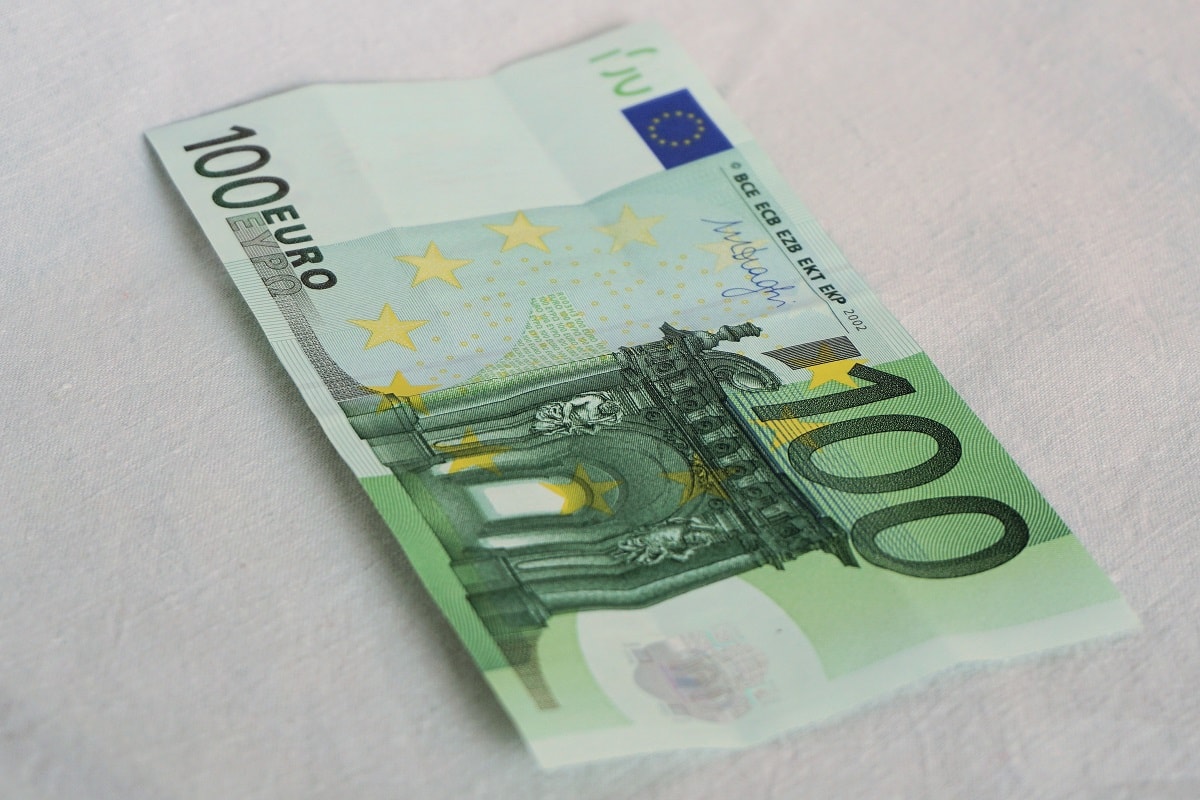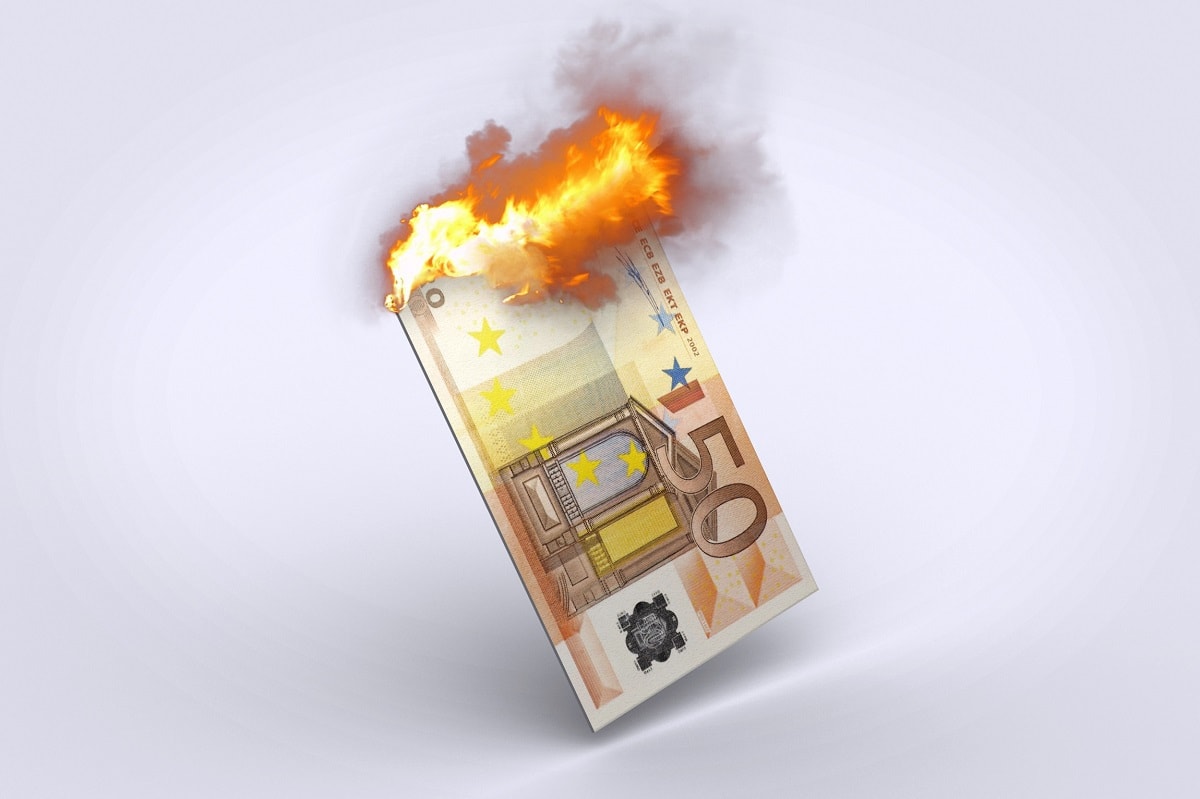Since the COVID pandemic, Europe has fallen on hard economic times, and the continent’s absolute and relative economic decline has deepened over the past several years.
Already in 2023, the United States GDP was significantly larger than the EU’s, with the US having a GDP of $26.9 trillion compared to the EU’s GDP of just over $15 trillion, with the gap between the EU and the US standing at 80 percent and continuing to increase.
This discrepancy also extends to the affluence of EU and US citizens, where the gap continues to grow. For instance, in 1990, US GDP per capita was only 16 percent higher than in the eurozone; by 2023, the difference had doubled to over 30 percent.
The bad news for Europe’s economic prospects centers on Germany, whose once-mighty economy has been struggling since the COVID pandemic, with some analysts questioning the German economic model and branding it the “sick man of Europe” and a country “in crisis.” Recent data point to the stagnation that has reinforced a sense of malaise and frustration across German society, especially in the country’s eastern Länder. France is also struggling. Its deficit has risen to 6.1 percent of the country’s economic output from 5.5 percent last year.
In fact, France is now in a worse fiscal condition than Italy, Greece, or Spain, with its debt having exploded to more than 3.2 trillion euros, or more than 112 percent of GDP. The United Kingdom’s largest economy outside the eurozone has stagnated for years, with low productivity rates and declining output. Italy’s economic growth for 2024 hovered at around 0.5 percent of GDP; for 2025, the forecast is between 0.5 and 0.8 percent. Poland is one bright spot among Europe’s larger economies. Its economy grew 2.9 percent in 2024 and is forecast by the European Commission to increase to 3.6 percent in 2025. Still, other Central and East European economies fell well below initial projections for 2024.
Europe’s economic crisis is more profound than the typical cyclical roadblocks that all developed economies face. Simply put, the “green emissions” targets imposed by the European Commission in the name of fighting climate change have all but crippled Europe’s industries and paralyzed Europe’s ability to compete in the marketplace. Nowhere is the relative competitiveness of EU and US economies better illustrated than in energy prices, with European costs two to three times higher rates than the United States, with taxes accounting for 23 percent of the price.
The problem is not limited to the eurozone, as the United Kingdom—the West’s birthplace of the Industrial Revolution—has the highest electricity prices in the developed world, with rates four times those in the United States. The sorry state of Europe’s energy sector is a vivid manifestation of decades of failed energy policies, in which overly-ambitious emissions reduction targets and a rigid climate policy have all but crippled Europe’s largest corporations.
The current stagnation and downward spiral of Europe’s economies owe much to the current strategy to make the EU climate-neutral by 2050, an economy with net-zero greenhouse emissions. The mandate is at the heart of the European Green Deal and is a legally binding target written into the European Climate Law. The climate law also sets an intermediate target of a 55 percent net reduction of greenhouse gas emissions by 2030, compared to 1990 levels.
These are draconian targets indeed, and to put their impact in perspective, one must understand that according to recent data published by the European Commission, the European Union accounts for approximately only 6 percent of global greenhouse gas emissions, well behind China, the United States, and India. Simply put, Europe could shut down all of its economic activity, and in the larger scheme of things, it would not dent the overall trends in global warming in a meaningful sense.
The deepening economic crisis in Europe, with the attendant and growing political instability, looks like a textbook example of ideology running ahead of sound judgment. Or rather, it reflects the apparent conviction among EU leaders that their policies can somehow avoid the reality of opportunity cost attendant to every economic policy change. In document after document, Brussels has insisted that the European Green Deal must be implemented as a crucial strategy to combat climate change, protect the environment, and position Europe as a global leader in sustainable technologies.
Yet Brussels’ climate advocates insist that climate neutrality by 2050 can be achieved while simultaneously boosting economic growth and creating new jobs in green sectors. Last but not least, the strategy would somehow ensure a “just transition that leaves no one behind” and effectively address environmental threats while also “securing economic competitiveness on a global scale.”
Such assertions are noble, but they do not change the harsh economic reality facing the EU, i.e., that its strategy on the environment is about to unravel the socio-economic pact that has been at the heart of Europe’s success since the early days of the European Coal and Steel Community. Simply put, without economic growth the very foundation of the generous social transfer payments and the consumption model in Europe will implode, with political consequences that are hard to foresee at this point.
Today, the European Union is on a trajectory toward ever-greater economic and political dislocations unless it reassesses the viability of the European Green Deal and course corrects. It is telling how linear the EU’s thinking about climate has become that, for instance, Germany shut down its last remaining nuclear reactors amid its efforts to decouple from Russian gas after Putin’s 2022 second invasion of Ukraine.

Euro. Image Credit: Creative Commons.
What Europe needs most of all today is to face the reality that its heretofore “no-alternative” approach to building an effective strategy to combat climate change is in fact unsustainable. Indeed, there are signs that at least some EU politicians are beginning to question the rigidity of the strategy and the underlying assumptions about its long-term impact.
The question is whether a middle-ground and less ideologically-driven approach to the problem can be devised in time to prevent deep and possibly irreparable harm to European economies and politics. The clock is ticking.
About the Author: Dr. Andrew A. Michta
Andrew A. Michta is Senior Fellow at the Scowcroft Center for Strategy and Security at the Atlantic Council of the United States. Views expressed here are his own.

